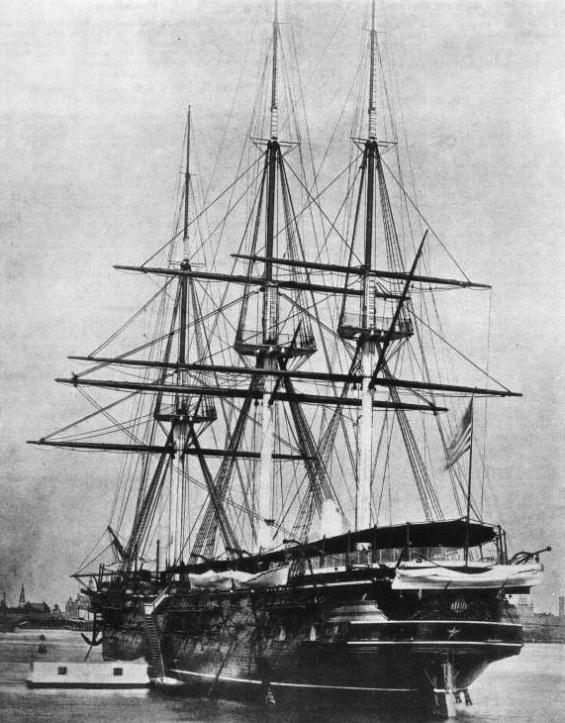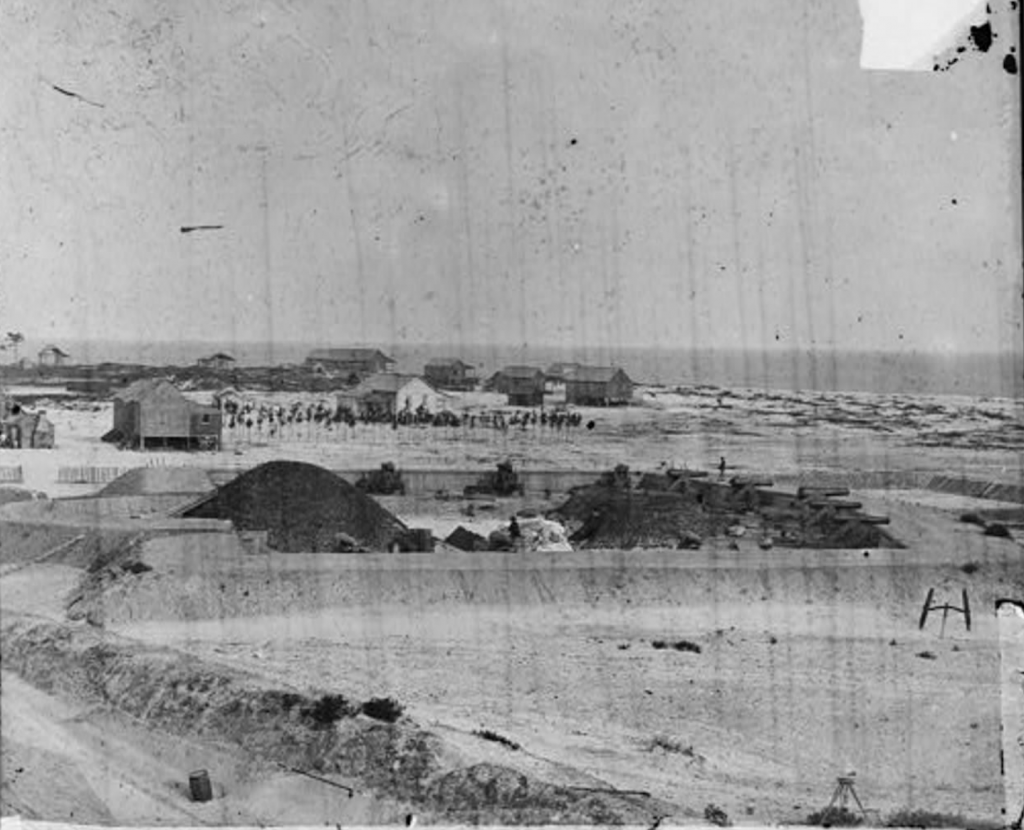In late October 1861, more than 80 ships carrying US sailors and soldiers set sail from Hampton Roads, Virginia, for Beaufort, South Carolina. The mission was dubbed the Great Expedition, and it was in response to President Lincoln’s call for a blockade of Confederate ports in the South. The newly formed South Atlantic Blockading Squadron hoped to develop a base at the Port Royal Sound in South Carolina. Unbeknownst to Navy officers, the armada was heading straight into the path of a hurricane. Before the Battle of Port Royal began one week later, Union soldiers and sailors fought for their lives in a battle against Mother Nature. Some did not survive.
On October 29, 1861, the Naval fleet assembled at Hampton Roads. They set sail arranged in three parallel lines, each following another at about a half-mile distance. The USS Wabash took the lead as flagship.
The Expedition enjoyed calm seas and light winds for the first few days. However, a tropical storm churning off the tip of Florida was climbing the eastern seaboard and had developed into a hurricane.
On November 1, while rounding Cape Hatteras, the winds intensified and increased to a gale. Heavy seas caused the orderly columns of ships to disassemble, and the fleet scattered. One sailor aboard the Wabash described water crashing over the gunboats and side-wheel steamers lurching so ferociously that their paddles revolved in the air. Throughout the night, timbers creaked and groaned as the ships rolled and pitched in the storm.
Onboard the steamer Winfield Scott, 500 soldiers from the 50th Pennsylvania fought to keep the ship afloat as waves battered it. The masts broke, and a huge seam opened onboard the vessel, allowing torrents of ocean water to spill in. The soldiers worked feverishly to pump out the water, throwing anything with extra weight overboard, including their guns, knapsacks, and overcoats.
Another ship, the Bienville, tried to come to the rescue, but the engineer and several crew members from the Winfield Scott abandoned their posts and leaped into the rescue boat, which was then swamped. Miraculously, the Winfield Scott survived the storm and was towed to safety by the steamer Vanderbilt.
The SS Governor sank during the storm, but in a daring rescue by the USS Isaac Smith and the USS Sabine, all but seven of the nearly 700 men were saved before the ship went down.
On November 4, the battered ships began to assemble outside the Port Royal Sound. On November 7, the Battle of Port Royal began, and despite its weather-worn fleet, Union forces took control of Fort Walker and Fort Beauregard, and Confederate forces retreated. Union forces then established a base of operations to support the Union blockade of Confederate ports.
If you would like to learn more about the South Atlantic Blockading Squadron or the Battle of Port Royal, search Fold3® today.








Great history story
I thought my husband, a Civil War enthusiast, would know all about this, but he didn’t! He found the article extremely interesting!
Jenny, thanks for spotlighting this little-known episode of the War. Those men were battling much more than just the enemy, and Mother Nature affected all of them in so many ways that we in a modern age tend to forget. Great post!
This has the makings of an epic movie. Can’t wait to read more about this and the heroes who managed the situation. As they say, everyone is a good captain in a calm sea.
The ocean and river conflicts and actions of the Civil War are often overlooked. If you visit Columbus, Ga, stop in at the National Civil War Naval Museum. Great displays, including a salvaged river gunboat.
How would I find the names of the men aboard these ships?
Hi RuthAnn, there is not a simple answer to your question. There is not a definitive list of soldiers and sailors who participated. It would require researching all the records for mentions of which regiments participated in this armada. Once you discover if your ancestor’s regiment was involved, then you can drill down to service records to see if your ancestor was serving in the Beaufort area following the Battle of Port Royal. It will take some detective work, but could prove to be a fascinating research project.
There are so many interesting facts that are omitted from history books. Wouldn’t it be nice if students were taught more about the soldiers’ struggles and how some gave their lives as depicted in this article. Unfortunately, in todays world, life is just one big “rush” and focused on the present. Learning more about the little details of our past history as given in this article helps us to know more about our future. To all that contribute in keeping past history alive, I thank you!
Thank you for this history!!
I completely agree. At 75 y/o I’m grateful for the history classes taught at school. We know now that inaccuracies occurred, but just the same this is how I learned love of country and patriotism. Sorely needed in today’s world.
I was wondering if there are lists of the people lost during the hurricanes.
Names of ships and all on board?
Were there lists of those missing?
Hello, I am not aware of a casualty list.
Thank you! I never heard of this story. Great post!
Great article – we vacation near Cape Hatteras ! If only more history was taught in schools maybe up & coming generations would appreciate what took place in the past to get to where we are now & the luxuries we have because of the sacrifices made back then !! History can never be erased for the ones who have endured it !! More focus should be placed on learning the past instead of trying to rewrite & change it !!